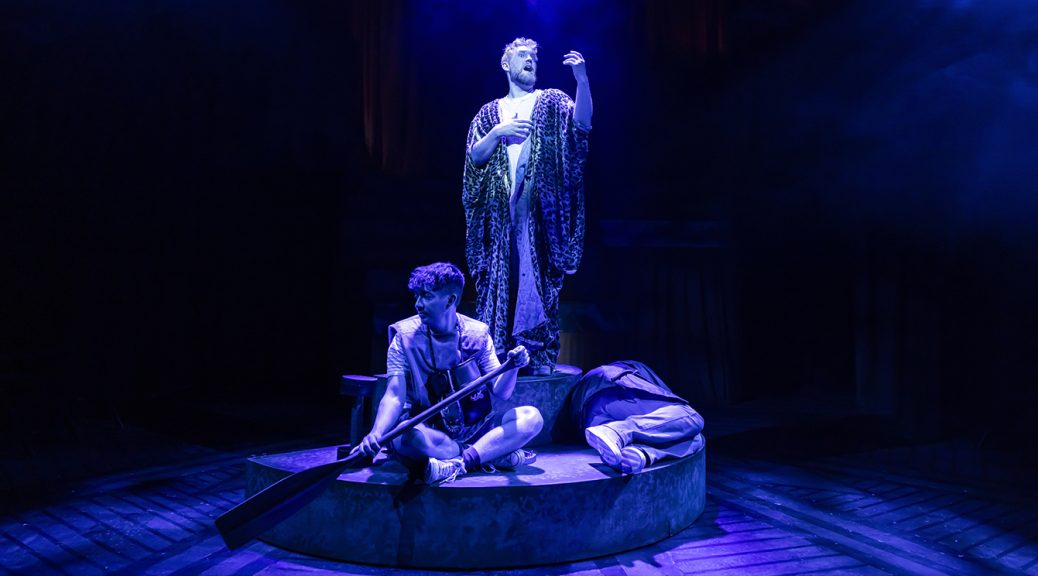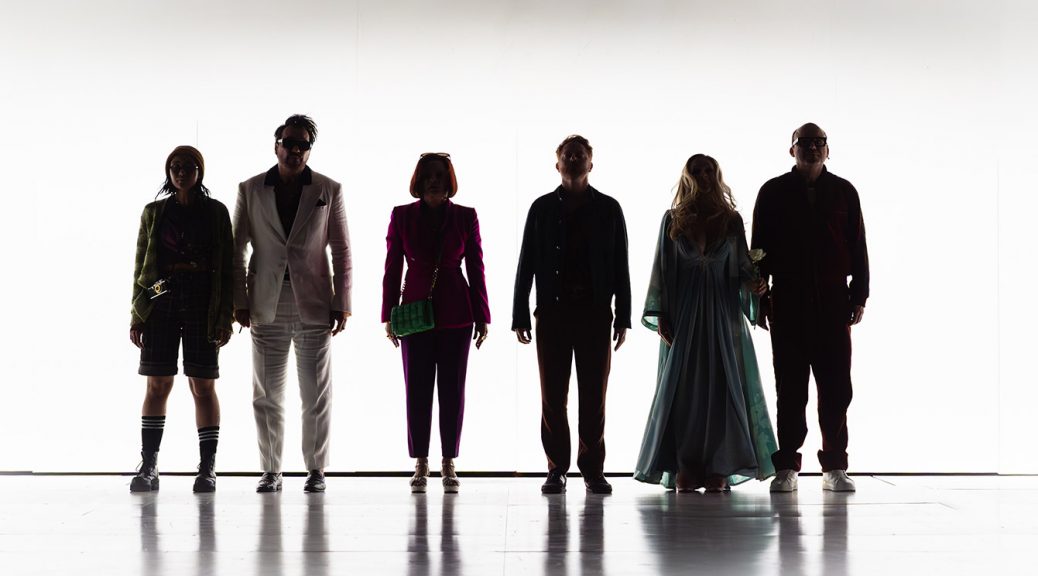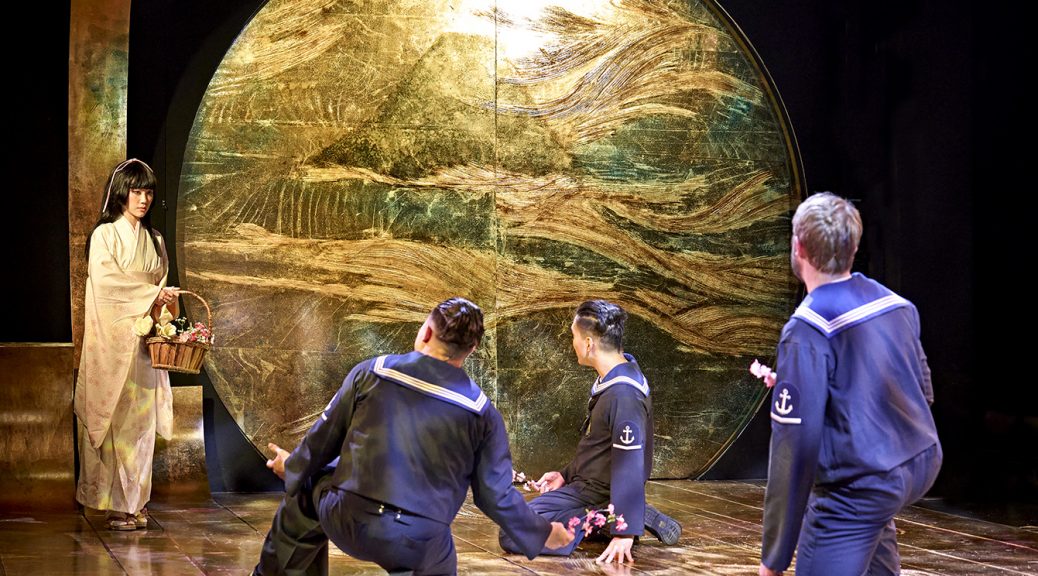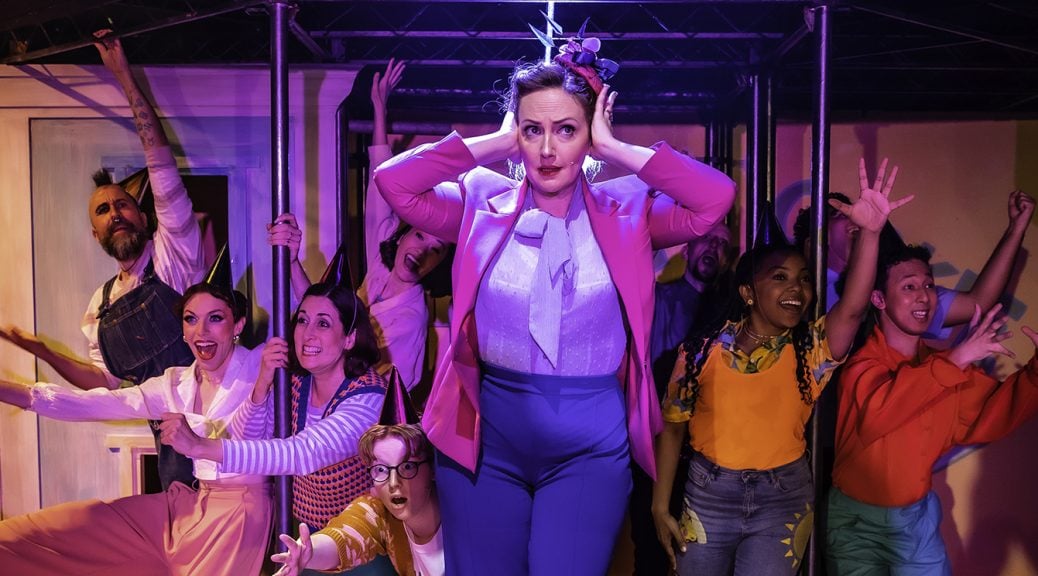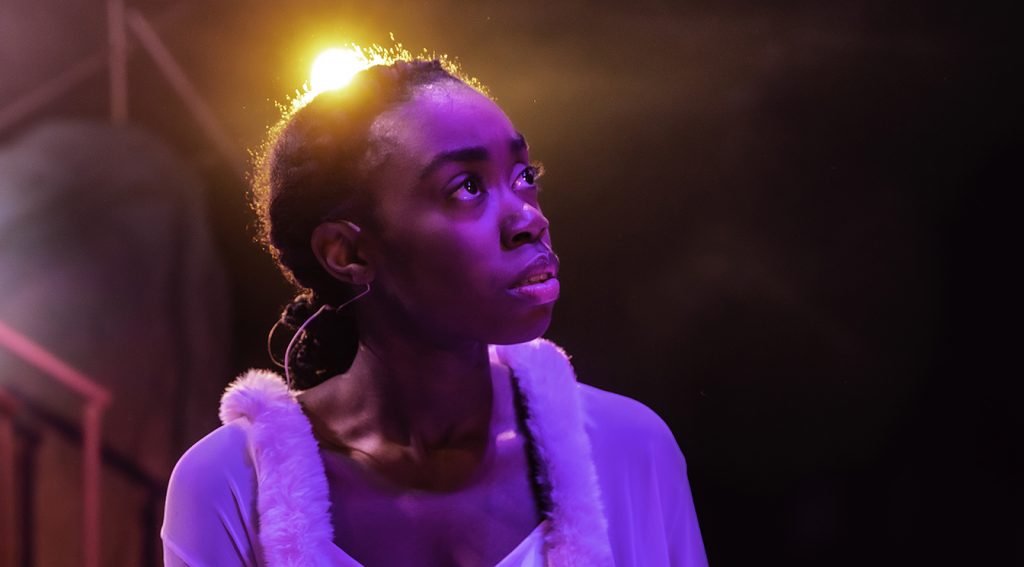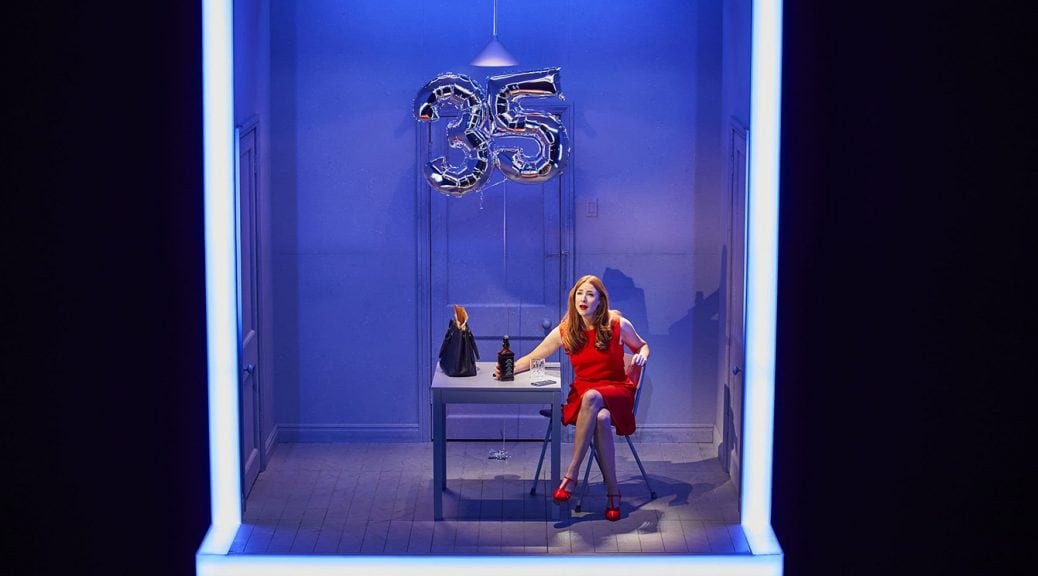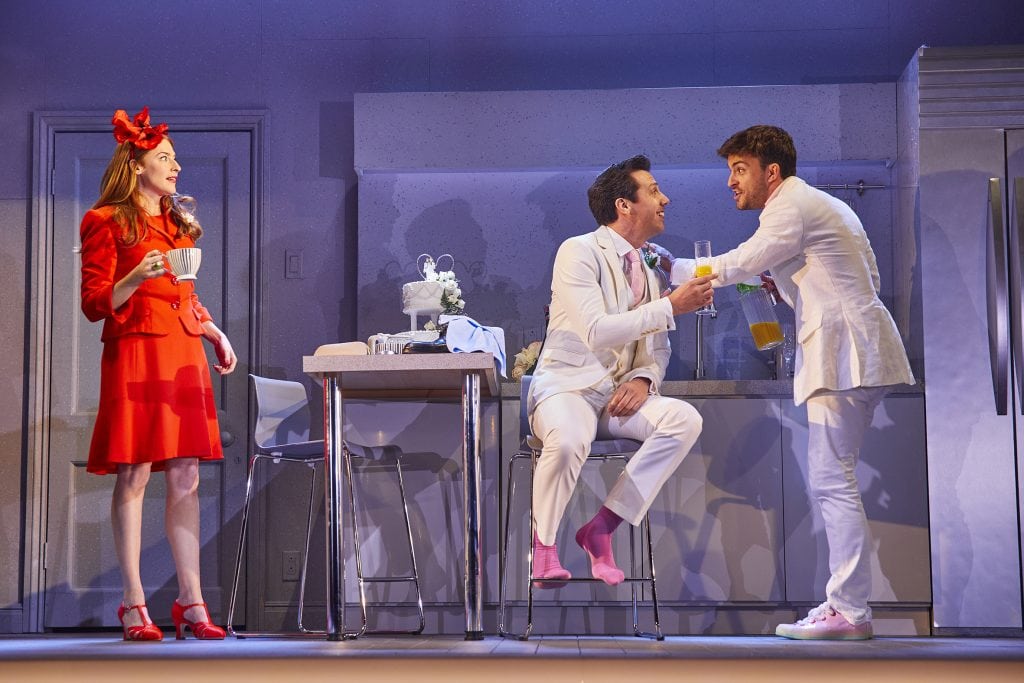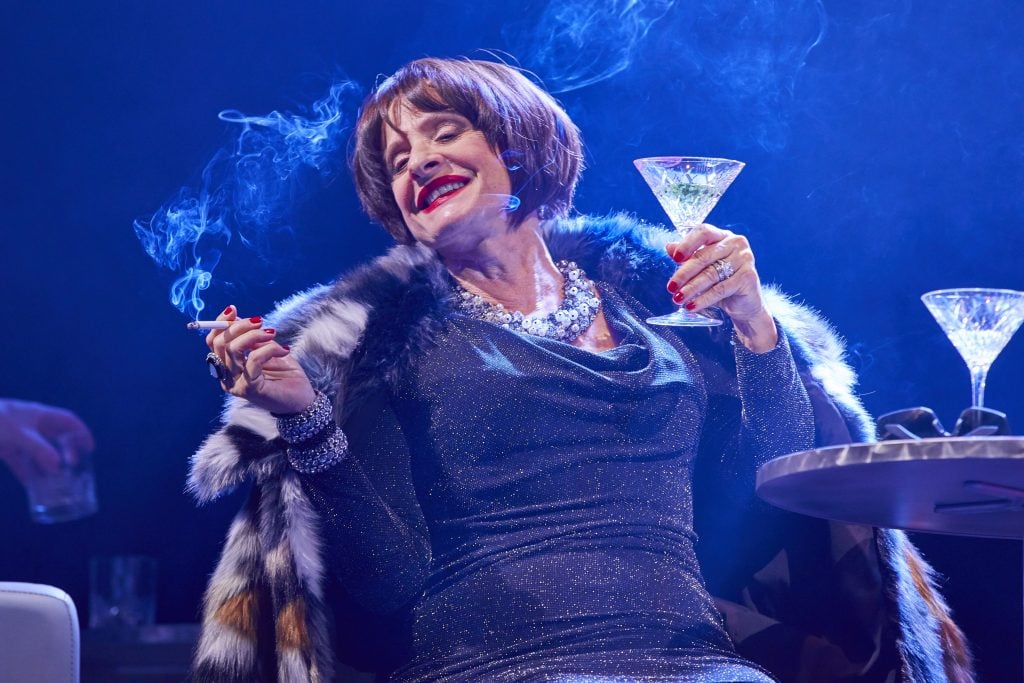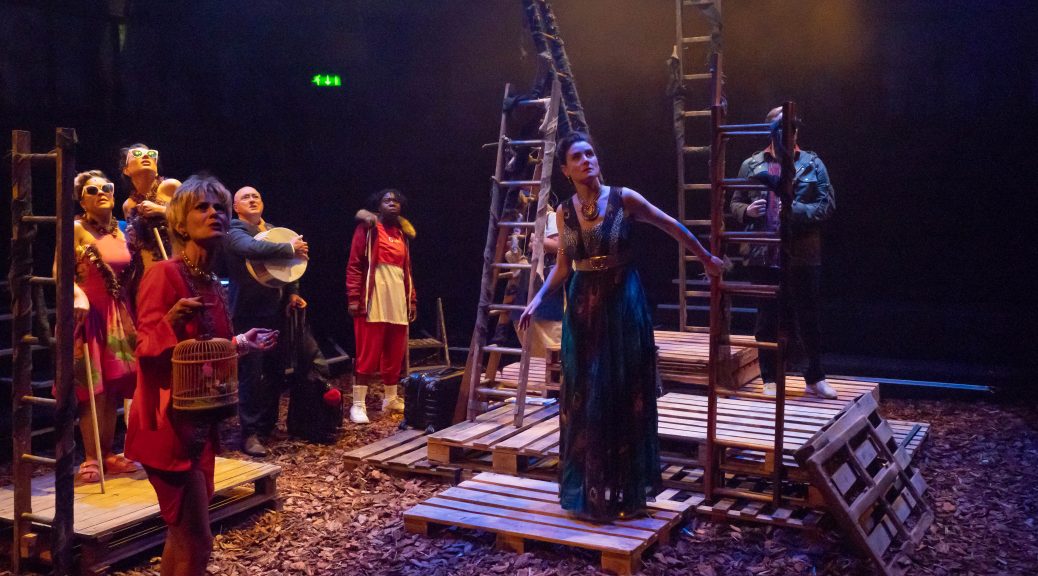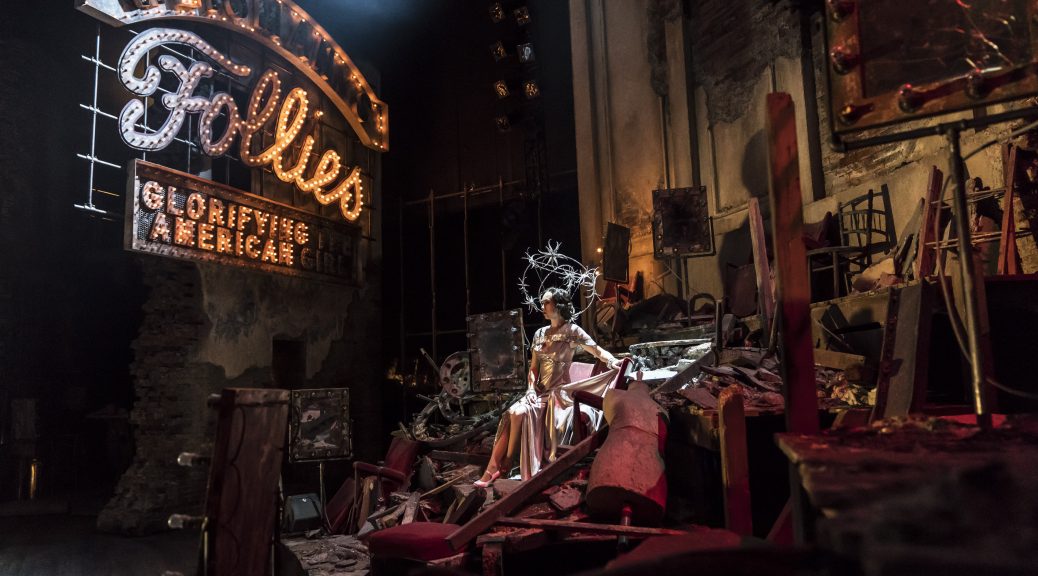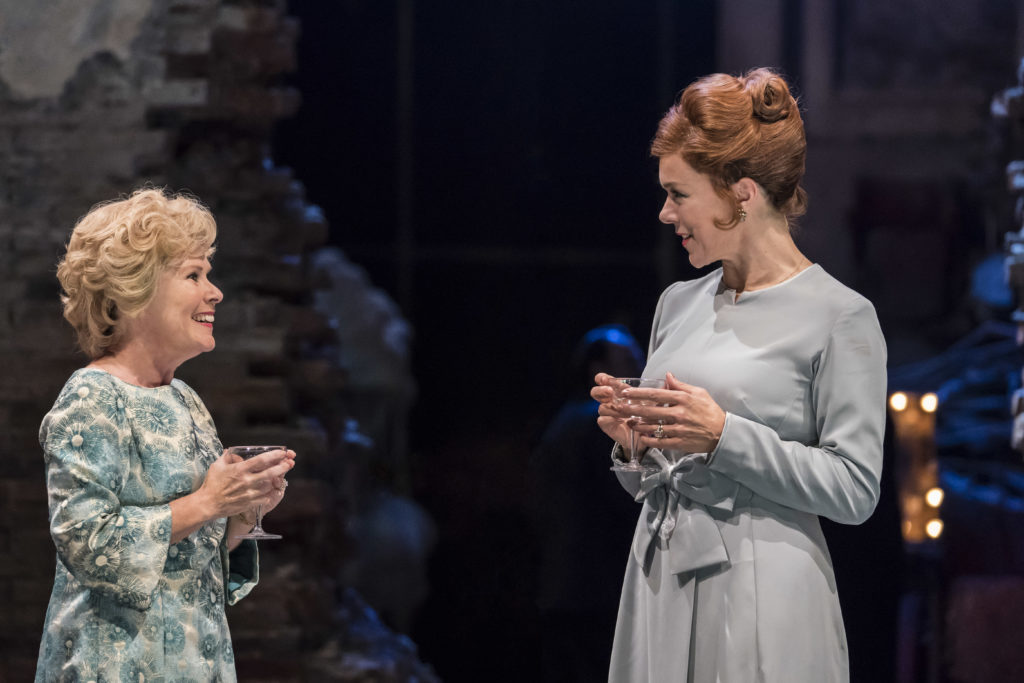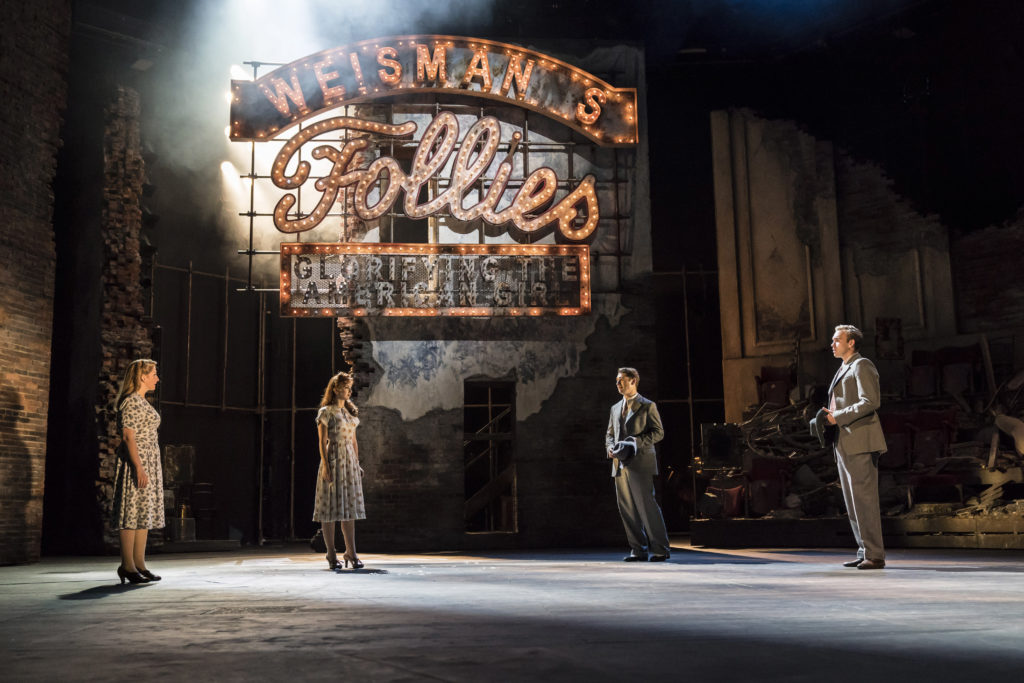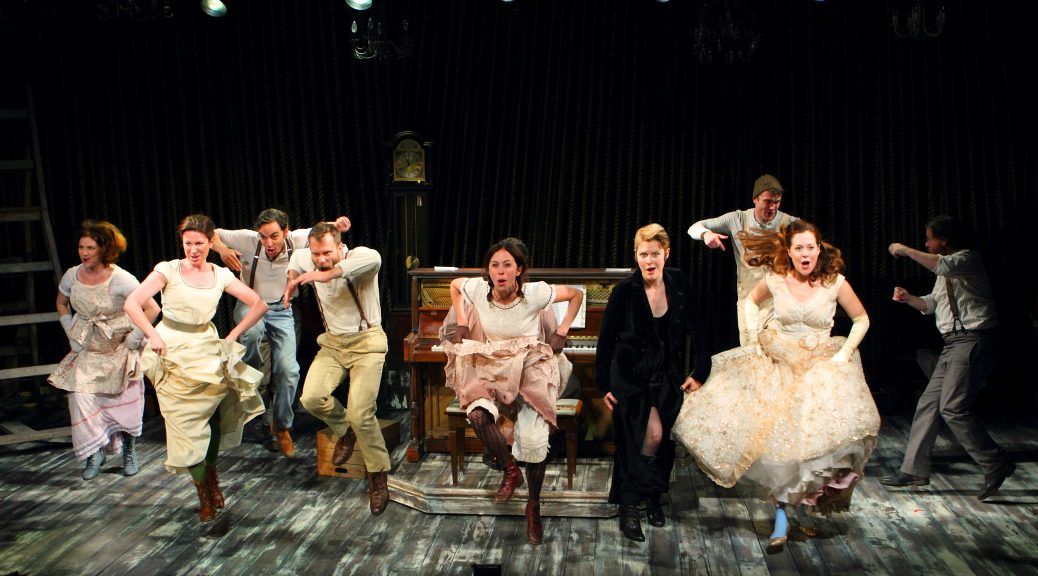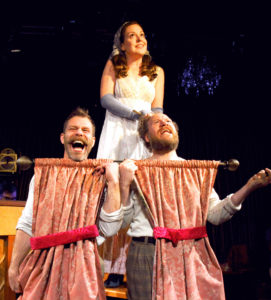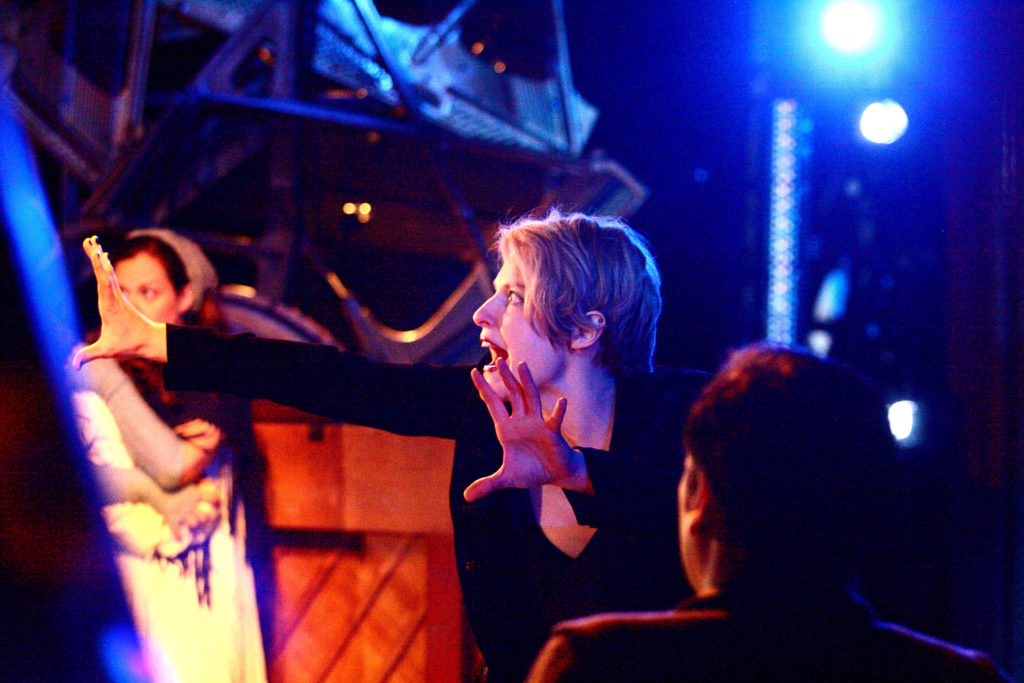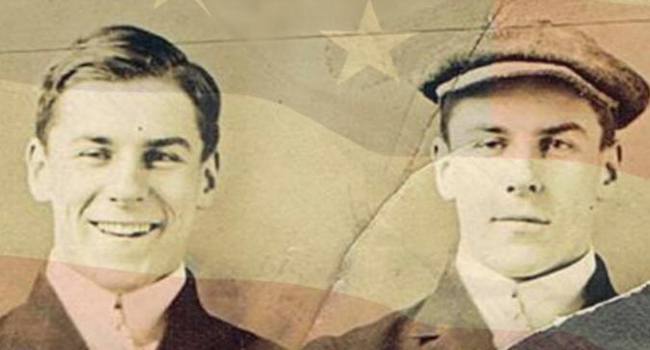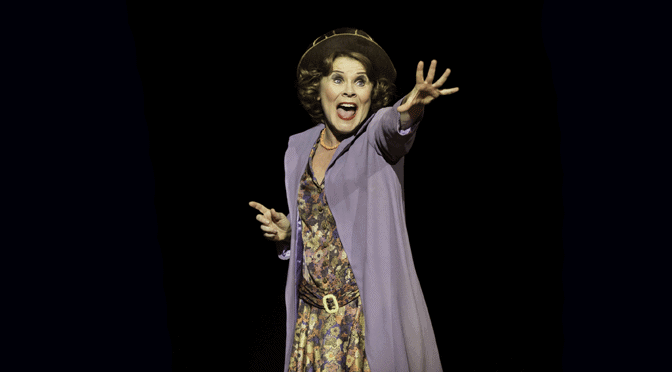Fans of Stephen Sondheim – and I’m one – are lucky right now. His last work, Here We Are, is playing at the National Theatre while this show has been revived in spirited style by director Georgie Rankcom. There’s fun to be had with comparisons or, to be frank, shared problems. But this is another part of the canon it is wonderful to get the chance to see. And fan or not, The Frogs is smart, fun and well-executed.
Like all Sondheim’s work, The Frogs is inspired by… a lot. There’s the play by Aristophanes, adapted “freely” by Burt Shevelove, then “even more freely” by Nathan Lane, and at each stage given Sondheim’s spin. And it’s a show with a long, somewhat convoluted genesis. Rather brilliantly, as it involves a journey on the River Styx, it starts in a swimming pool!

A lot depends on the leads Dionysos and his slave Xanthias, who journey to Hades to save the world through art. The plan, to bring George Bernard Shaw back to Earth, is suitably kooky. Dan Buckley and Kevin McHale, who take the parts, are up to the job, sounding great and making an excellent comedy duo. The metatheatricality and the message in the show are generally overdone, but with these two the touch is, thankfully, light.

Their adventures are accompanied by a talented ensemble who also double as extra characters. Joaquin Pedro Valdes stands out as Herakles and Martha Pothen as Shaw. The structure is simple enough, but the pace slows too often. Thankfully, the music is a delight. From the jolly refrain ‘I Love To Travel’, to a melancholic number, ‘It’s Only A Play’, the songs are Sondheim quality, and you can’t give higher praise than that.
Still, given Sondheim’s back catalogue, there’s some disappointment. The Frogs feels heavy-handed. Even the lyrics, although always smart, are a little blunt. And a final contest (apparently agon is the term) between Shaw and Shakespeare is far too lengthy. The point is interesting enough: do we need Shavian “great abstractions” or the bard’s poetry? Pothen and Bart Lambert (as Will) do well. But the outcome is predictable (who really wants an “orgy of Georgie”?) and preachy.

There is a strong sense of musical revue about the show (it started out at Yale) that suits the venue and that Rankcom cleverly leans into. Dance numbers, difficult in such a small space, showcase choreographer Matt Nicholson’s talents and add energy – the “web-footed debauchery” of the titular amphibians is a hoot. And having a special guest as Pluto is a great idea (until 31 May it’s Victoria Scone and very good she is, too).
The variety of the score and the broad humour are all embraced, with lots of good gags based around Greek myths (apparently Viagra is the god of perseverance). It’s on a wider level, with Sondheim reviewing the state of the world, that problems arise. A touch of the classroom carries the potential to defeat the argument and instruction that we should all get angry and act. Maybe it’s more generous to say that the show’s sense of urgency overwhelms it? At least there is fun as well as conviction here.
Until 28 June 2025
Photos by Pamela Raith

